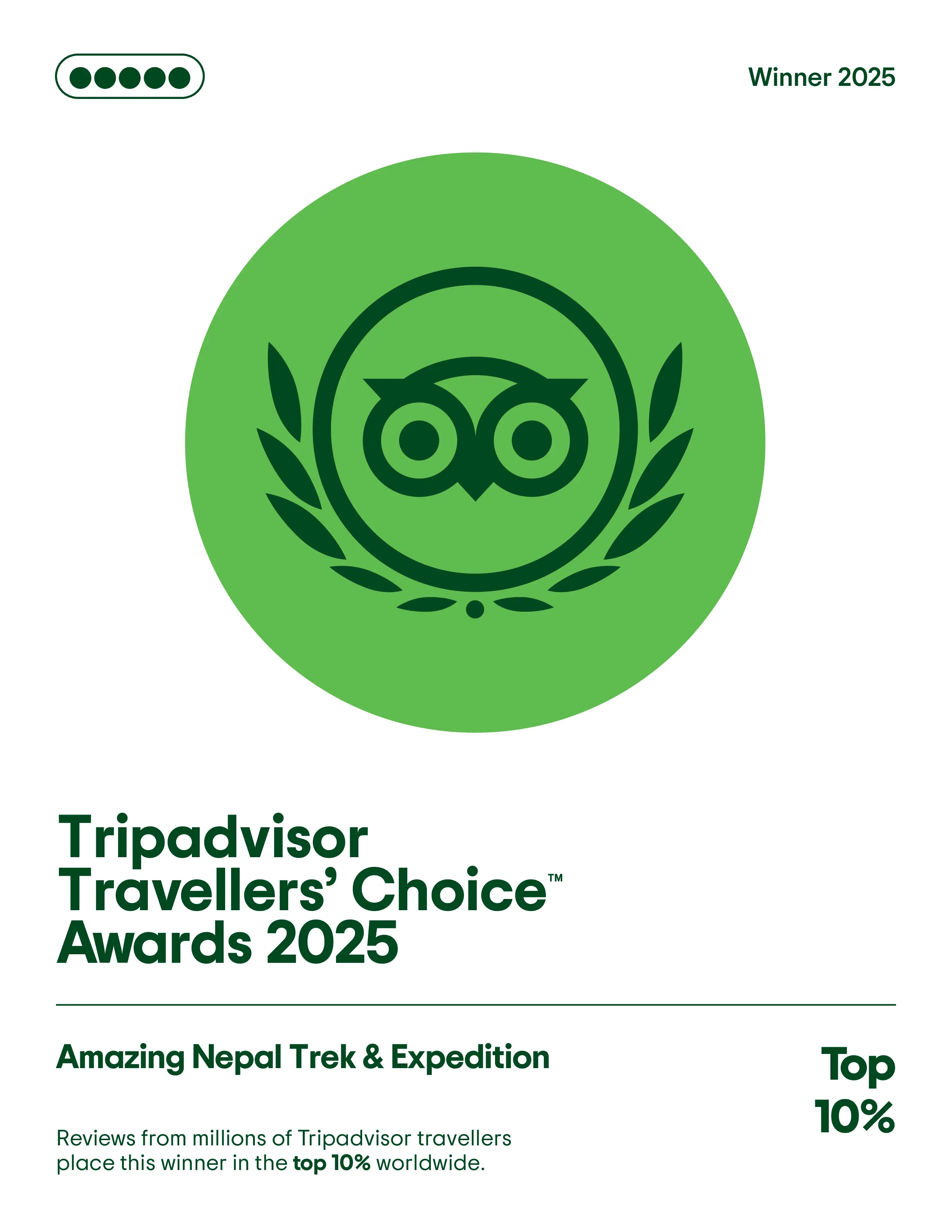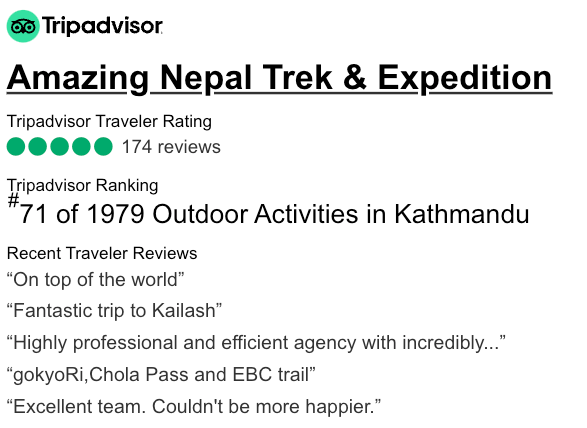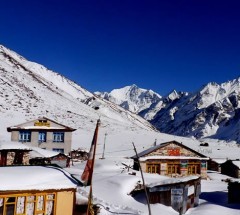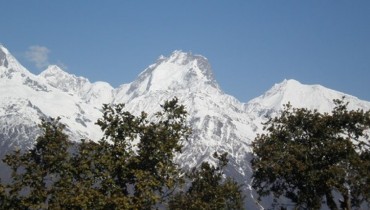What is the Langtang Valley Trek and why is it popular?
The Langtang
Valley Trek is one of Nepal’s most scenic and culturally rich trekking routes,
located just north of Kathmandu in the Langtang National Park. It offers a
perfect blend of majestic Himalayan views, diverse flora and fauna, ancient
Buddhist culture, and warm hospitality from the local Tamang and
Tibetan-influenced communities. The trek is often described as a hidden gem
because it’s less crowded than popular routes like Everest or Annapurna, yet
equally rewarding in natural beauty and cultural immersion. It is ideal for
those who want a short-to-moderate trek with a strong connection to both nature
and heritage.
How difficult is the Langtang Valley Trek?
The trek is
considered moderate in difficulty. It does not involve high technical climbs,
and the maximum altitude reached is around 3,870 meters at Kyanjin Gompa. Daily
walking hours average 5 to 7 hours, and the trail includes gradual ascents
through forests, villages, and rocky paths. While you don’t need mountaineering
experience, a reasonable level of fitness and endurance is required. Beginners
with determination and proper acclimatization can complete the trek
successfully.
When is the best time to do the Langtang Valley Trek?
The ideal
seasons for the Langtang Valley Trek are spring (March to May) and autumn
(September to November). During spring, the rhododendron forests bloom, and the
weather is mild with excellent visibility. Autumn offers clear skies and
stunning mountain views after the monsoon has cleared the dust. While winter
treks (December to February) are possible, they involve cold temperatures and
snow at higher elevations. Monsoon season (June to August) is not ideal due to
heavy rainfall, slippery trails, and landslide risks.
What permits are required for the trek?
Trekkers need
two main permits: the Langtang National Park Entry Permit, which allows access
to the protected area, and the TIMS (Trekkers' Information Management System)
card, which ensures your safety by registering your trek with authorities.
These can be obtained in Kathmandu through registered trekking agencies or at
the Nepal Tourism Board office. The required documents include a copy of your
passport and passport-size photos.
How do I get to the Langtang Valley starting point?
The trek
typically begins in Syabrubesi, a small village about 7–8 hours' drive from
Kathmandu. The journey is made by private jeep or public bus, passing through
scenic hills and rural landscapes. The road is bumpy and winding in parts but
offers beautiful views of the Trishuli River and surrounding hills. Your trek
organizer usually arranges the transportation, and the drive itself becomes an
introductory part of your Himalayan adventure.
What is the daily trekking routine like?
Each day
typically starts early, with breakfast around 7 a.m. and departure by 8 a.m.
You’ll walk for 5 to 7 hours with several breaks in between. Lunch is taken at
local teahouses en route, and you arrive at your overnight stop by
mid-afternoon. Evenings are spent resting, enjoying dinner, and chatting with
fellow trekkers or locals. Teahouses provide simple but hearty meals and
accommodation in twin-sharing rooms.
What kind of accommodation and food can I expect?
In Kathmandu,
you’ll stay in tourist-class hotels. During the trek, accommodations are in
local teahouses or guesthouses that offer basic amenities like a bed, blankets,
and sometimes an attached bathroom. Meals are simple but nourishing, with
typical options including dal bhat (rice, lentil soup, and vegetables),
noodles, momos, porridge, pancakes, and eggs. Drinking water is available in
boiled or bottled form, and you can also use purification tablets for tap
water.
Is acclimatization necessary on this trek?
Yes, although
the Langtang Valley Trek is not extremely high altitude, acclimatization is
important to avoid symptoms of Acute Mountain Sickness (AMS). The itinerary
usually includes a rest day in Kyanjin Gompa, where you can hike to nearby
viewpoints like Kyanjin Ri or Tserko Ri to help your body adjust. Staying
hydrated, eating well, and ascending gradually are essential for a safe trek.
What should I pack for the Langtang Valley Trek?
Essential items
include layered clothing for changing weather, a warm sleeping bag, a down
jacket, trekking boots, trekking poles, a raincoat or poncho, gloves, woolen
hat, sunglasses, sunscreen, a reusable water bottle, toiletries, basic
first-aid, headlamp, snacks, and copies of your travel documents. Lightweight
and durable gear is best, and you can also rent items in Kathmandu if needed.
Can I trek without a guide or porter?
Yes, independent
trekking is allowed in Langtang, but hiring a licensed guide is highly
recommended for safety, navigation, and cultural enrichment. Porters can carry
your heavier bags, allowing you to walk comfortably with a light daypack. A
guide can also assist in emergencies and enhance your understanding of the
region's culture, geography, and traditions.
Are there ATMs or mobile signals on the trail?
ATMs are only
available in Kathmandu, so you should carry sufficient Nepali rupees for the
entire trek. Teahouses accept cash only. Mobile signals (mainly NTC or Ncell
networks) are available in some villages, but the connection is weak or
nonexistent at higher altitudes. Wi-Fi is available in a few teahouses for a
fee, but it’s best not to rely on it.
What happens in case of an emergency?
Your trekking
company and guide will handle emergencies. Most companies have protocols for
evacuation, including contacting rescue helicopters if needed. That’s why
comprehensive travel insurance covering high-altitude trekking and helicopter
evacuation is essential. Guides also carry basic first aid kits and are trained
in wilderness response.
What is the cultural significance of the Langtang region?
The Langtang
Valley is inhabited mainly by Tamang and Tibetan-origin communities. You’ll
encounter ancient monasteries like Kyanjin Gompa, prayer wheels, mani walls,
and colorful prayer flags. The culture is deeply influenced by Tibetan
Buddhism, and the people are known for their kindness, hospitality, and
resilience—especially post the 2015 earthquake that affected the region
heavily. Supporting local teahouses and guides contributes directly to
community rebuilding and sustainability.
Is the Langtang Valley Trek safe after the 2015 earthquake?
Yes, the
Langtang region has made a strong recovery since the earthquake. Trails,
bridges, and guesthouses have been rebuilt and improved, with safety as a
priority. The Nepal government and trekking agencies closely monitor
conditions, and the route is now fully operational and considered safe for
trekking.
Can I combine the Langtang Trek with other treks or destinations?
Yes, the
Langtang trek can be extended to include Gosaikunda Lake, a sacred alpine lake,
or the Helambu Trek, offering further cultural exposure and mountain views.
These extensions allow you to explore more of the Langtang National Park and
are suitable for those who have extra time and want a longer adventure.

 54 Reviews on Google
|
54 Reviews on Google
|  30 Reviews on Facebook
30 Reviews on Facebook







 WhatsApp Us
WhatsApp Us




